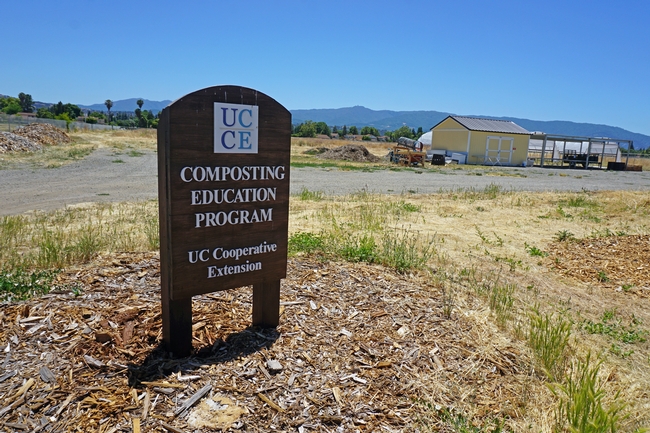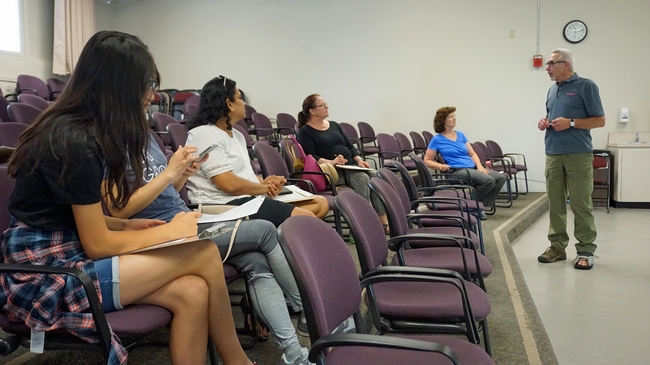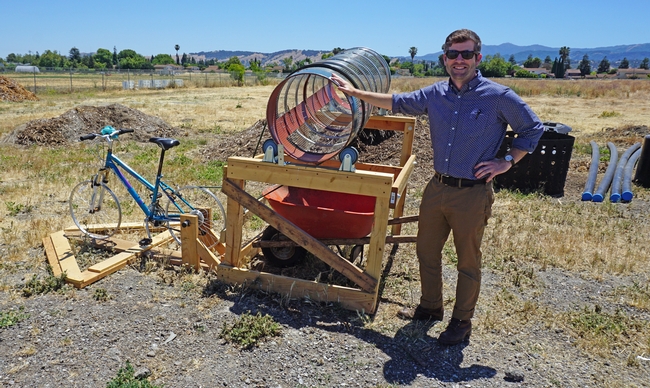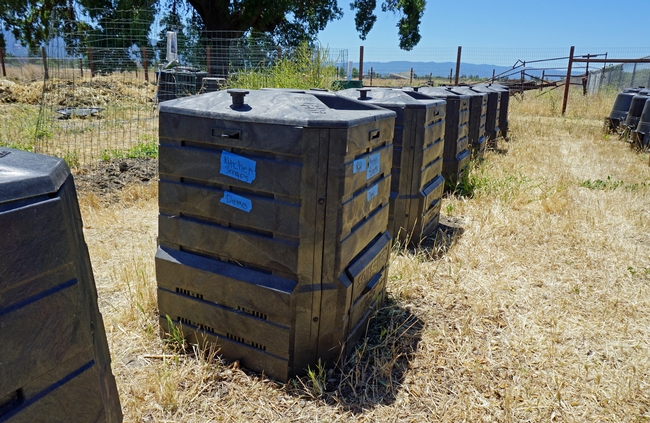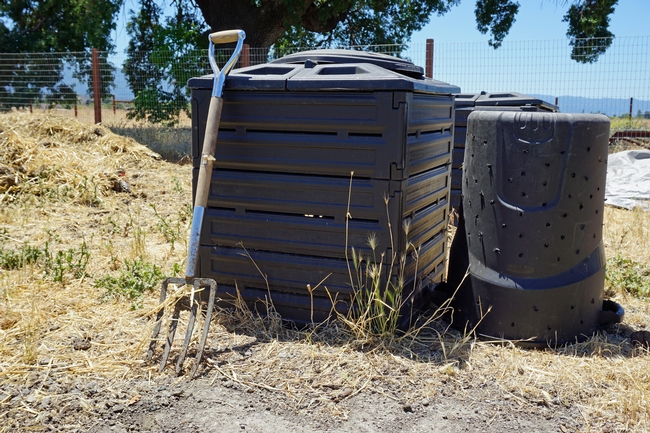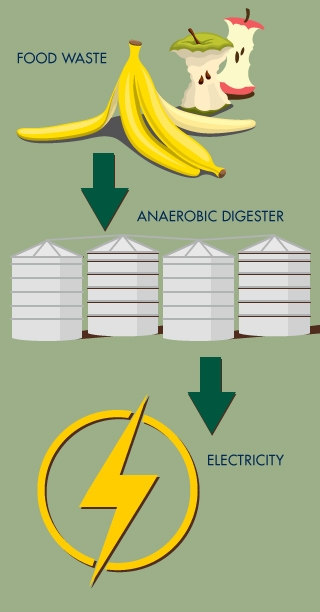Posts Tagged: waste
Reduce food waste to combat world hunger and slow global climate change
One-third of the world's food is spoiled or tossed rather than eaten, a fact that is tragic when nearly one billion people go hungry. The injustice of food waste is worsened by the fact that food decomposing in landfills emits greenhouse gases that contribute to climate change.
The conventional management of municipal waste in landfills places discarded food and plant matter into an anaerobic environment, initiating a chemical reaction that turns biomass into biogas – specifically methane, a greenhouse gas that's 28 times more potent than carbon dioxide.
Reducing the volume of the California waste stream and reducing the emission of greenhouse gases into the atmosphere are objectives that have spurred state lawmakers to enact regulations, such as Assembly Bill 939, which in 1985 mandated a 50 percent diversion of solid waste away from landfills. A 1989 update to the law also required municipalities to reach out to residents with training on greenwaste etiquette and waste diversion.
UC Cooperative Extension is working closely with the cities and county of Santa Clara in a far-reaching program to divert organic matter – food and green waste – from landfills by composting and using the product to enrich soil in the home garden.
In early June, UC Master Composter Don Krafft conducted a class on composting in a Palo Alto community center, one of 22 sessions to be offered in the spring and summer of 2018. A retired telecommunications professional, Krafft's interest in composting stemmed from his work as a Master Gardener for UC Cooperative Extension.
“I live in a townhouse, so I do worm composting. The No. 1 reason,” Krafft said, “is because it's fun.”
The composting workshops are just one component of the UC Cooperative Extension's composting efforts in Santa Clara County, led by UCCE staff research associate Cole Smith. The Environmental Protection Agency has a food recovery hierarchy, he said, which has source reduction at the top, followed by feeding the hungry, feeding animals, industrial uses, then composting, and finally delivery to a landfill.
“By diverting and recycling at the source, we reduce the diesel footprint for hauling,” Smith said. “We want to tighten the nutrient loop and the backyard is the closest place.”
The classic composting technique involves layering “browns” – dry leaves, sawdust, woody cuttings, straw, shredded newspaper and cardboard – with “greens” – grass clippings, food scraps, coffee grounds, egg shells, green plant cuttings and manure.
“Start and end with browns to keep the fruit flies down,” Krafft said. “It's like making lasagna.”
Certain foods should not be added to the home compost heap – including meat, whole eggs and dairy products.
The mix of greens and browns should be maintained evenly moist, but not soaked, and turned at regular intervals, the more often, the faster the materials decompose.
“Maintenance is completely adaptable. You can do a lot or a little and it gets easier with time,” Krafft assured the audience.
The compost is ready when the components are no longer recognizable and the pile is cold. Once composted, the former waste becomes a stable soil amendment with a pleasant earthy smell. It's then ready to be applied in the garden.
UCCE Santa Clara has also developed a three-acre composting demonstration site at Martial Cottle Park in San Jose, where volunteers are composting animal waste generated by the 4-H animal program in a project made possible by a grant from the Santa Clara Valley Water District.
The facility includes a variety of commercial and homemade compost containers, including one built by a volunteer that employs bicycle power to mix compost.
The issue of food waste is capturing significant attention not only in Santa Clara County and not only in the garden. Food waste reaches across multiple disciplines, including agriculture, environment, and public health, key areas of UC Agriculture and Natural Resources' efforts.
“Food waste is a symptom of our food systems and food practices going astray,” said Wendi Gosliner, a project scientist in the UC ANR Nutrition Policy Institute, co-founder of California Food Waste Prevention Week, which was held for the first time in March 2018.
“Addressing the issue requires researchers, practitioners, policy makers, communities and individuals to innovate and develop new solutions,” Gosliner said.
UC ANR programs that have a hand in food waste prevention include:
- Nutrition education programs – UC CalFresh and the Expanded Food and Nutrition Education Program – which teach families how to eat right and economize
- The UC Master Food Preserver Program, which offers training on canning, freezing, drying, fermenting and other techniques to preserve a summertime food bounty to eat later
- The 4-H Youth Development program, which trains youth in recycling and is providing animal manure for the Santa Clara compost demonstration site
- The UC Master Gardener Program, which endorses the use of homemade compost
- Nutrition Policy Institute, which conducts research that informs nutrition policy and programs for healthy children, families and communities
“UC ANR translates research to practice in helping communities manage food resources, learn to preserve food and compost – all parts of the food waste solution,” Gosliner said. “Thinking about these and other UC ANR activities under the umbrella of food waste prevention can help to better nourish people, protect the environment and conserve human, natural and financial resources.
Biodigester turns campus waste into campus energy
Last week, on Earth Day, the university and Sacramento-based technology partner CleanWorld unveiled the UC Davis Renewable Energy Anaerobic Digester (READ) at the campus' former landfill. Here, the anaerobic digestion technology Zhang invented is being used inside large, white, oxygen-deprived tanks. Bacterial microbes in the tanks feast on campus and community food and yard waste, converting it into clean energy that feeds the campus electrical grid.
“This technology can change the way we manage our solid waste,” Zhang said. “It will allow us to be more economically and environmentally sustainable."
It is the third commercial biodigester CleanWorld has opened using Zhang's technology within the past two years and is the nation's largest anaerobic biodigester on a college campus.
The system is designed to convert 50 tons of organic waste to 12,000 kWh of renewable electricity each day using state-of-the-art generators, diverting 20,000 tons of waste from local landfills each year. It is expected to reduce greenhouse gas emissions by 13,500 tons per year.
The READ BioDigester encompasses several of the university's goals: reducing campus waste in a way that makes both economic and environmental sense, generating renewable energy, and transferring technology developed at UC Davis to the commercial marketplace.
The biodigester will enable the more than 100 million tons of organic waste each year that is currently being landfilled in the U.S. to be converted to clean energy and soil products. The READ BioDigester is a closed loop system, moving from farm to fork to fuel and back to farm. Whatever is not turned into biogas to generate renewable electricity can be used as fertilizer and soil amendments — 4 million gallons of it per year, which could provide natural fertilizers for an estimated 145 acres of farmlands each day.
Nearly half of the organic waste, or feedstock, needed to operate the biodigester to full benefit will come from UC Davis dining halls, animal facilities and grounds. CleanWorld is working with area food processing and distribution centers to supply the remaining amount. Meanwhile, UC Davis will earn 100 percent of the project's green energy and carbon credits and receive all of the electricity generated.
Anaerobic digestion is an age-old process. However, Zhang's patented technology made it more efficient — capable of eating a broader variety and bigger quantity of waste, turning it into clean energy faster and more consistently than other commercial anaerobic biodigesters.
View a video about the UC David biodigester here:
(This blog post is condensed from a UC Davis news release about the biodigester.)
Additional information:
- Read the full press release
- Download biodigester photos
- Vine video: From lunch to lights
- Visit http://www.cleanworld.com/
How UC helped turn onion waste into clean energy
Ten years ago, a California family's food-processing business was booming -- so much so that it was in danger of drowning in its own success. A new idea out of UC Davis helped them stay on top.
In 1983, Gills Onions had been asked by La Victoria Salsa to provide large quantities of high-quality, fresh-cut onions when no automated equipment and processes existed. With typical farmers’ "can do" attitude, brothers Steve and David Gill and their 16 employees developed a system to peel, slice, dice and deliver the first fresh-cut onions in the food processing industry.
By 2000, the Gills and their 400 employees were processing millions of pounds of sliced and diced onions weekly for restaurants, salsa makers and grocery stores. They had become the largest fresh-cut onion processor in the nation.
But they were being buried in onion waste -- the unused tops, tails and skins, which account for about 40 percent of the original onion mass.
Previously, their solution had been to truck these onion leftovers from their Oxnard processing plant to surrounding farm fields and plow them into the soil as compost. But now they had so much waste – up to 1.5 million pounds every week - that this solution had become too costly and environmentally unsustainable.
So they went looking for new ideas. They found them in the bright minds and laboratories of UC Davis research scientists and students.
UC Davis engineering professor Ruihong Zhang, a leading innovator with a passion and genius for turning food waste into energy, determined that onion juice was very good food for methane-producing microbes. With her research data, Gills’ engineers and contractors developed an anaerobic digester system that turns their leftover onions into electricity.
They squeeze the onions, feed the juice to the microbes, and use the methane that the microbes excrete to run a fuel cell that makes electricity.
Today that electricity powers the Oxnard processing plant. This year, they expect to save $700,000 on power bills and $400,000 on trucking costs. (They even sell the squeezed-out onion pulp, as a high-quality cattle food.)
Thanks to Professor Zhang and the University of California, Gills’ waste problem is now an energy source and new product line. The firm expects to make back its $9.5 million capital investment in six years.
And they are famous in the produce and energy industries. People come from all over the world to learn from their experience. They are winning engineering and environmental awards. (They are especially proud of beating the Dallas Cowboys' new $3 billion super-high-tech football stadium in a competition by the American Council of Engineering Companies.)
The help Gills Onions needed with their business problem was available to them, and the rest of the world, in part because California's public research universities get financial support from the private sector. In Ruihong Zhang's UC Davis lab alone, in the seven years she has been perfecting waste-to-energy technology, six donors (including Gills Onions) have given $221,000 to pay graduate student researchers' stipends, tuitions and fees; pay postdoctoral scholars; and purchase bioreactors and laboratory supplies. They also have donated $305,000 worth of equipment.
In fact, California's public colleges and universities have done more to make this state an international agricultural powerhouse than most of us realize. Yet state funding for public universities is unpredictable, and when universities seek philanthropic support, they risk criticism that they are privatizing or selling out – even though private support remains a small percentage of public university budgets (at UC Davis, it’s less than 7 percent).
The University of California needs California businesspeople to support its programs -- with their influence and their wallets. What sector of the state has more to lose if the new ideas dry up?
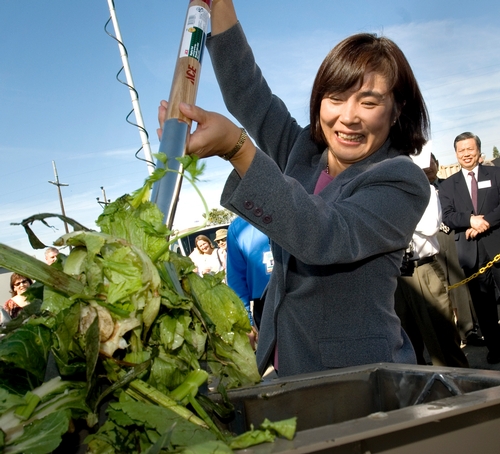
(Photo: Karin Higgins, UC Davis)


